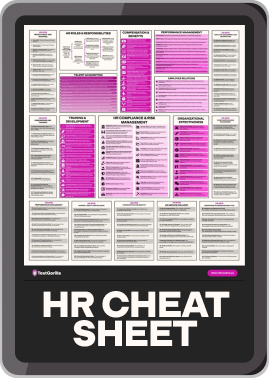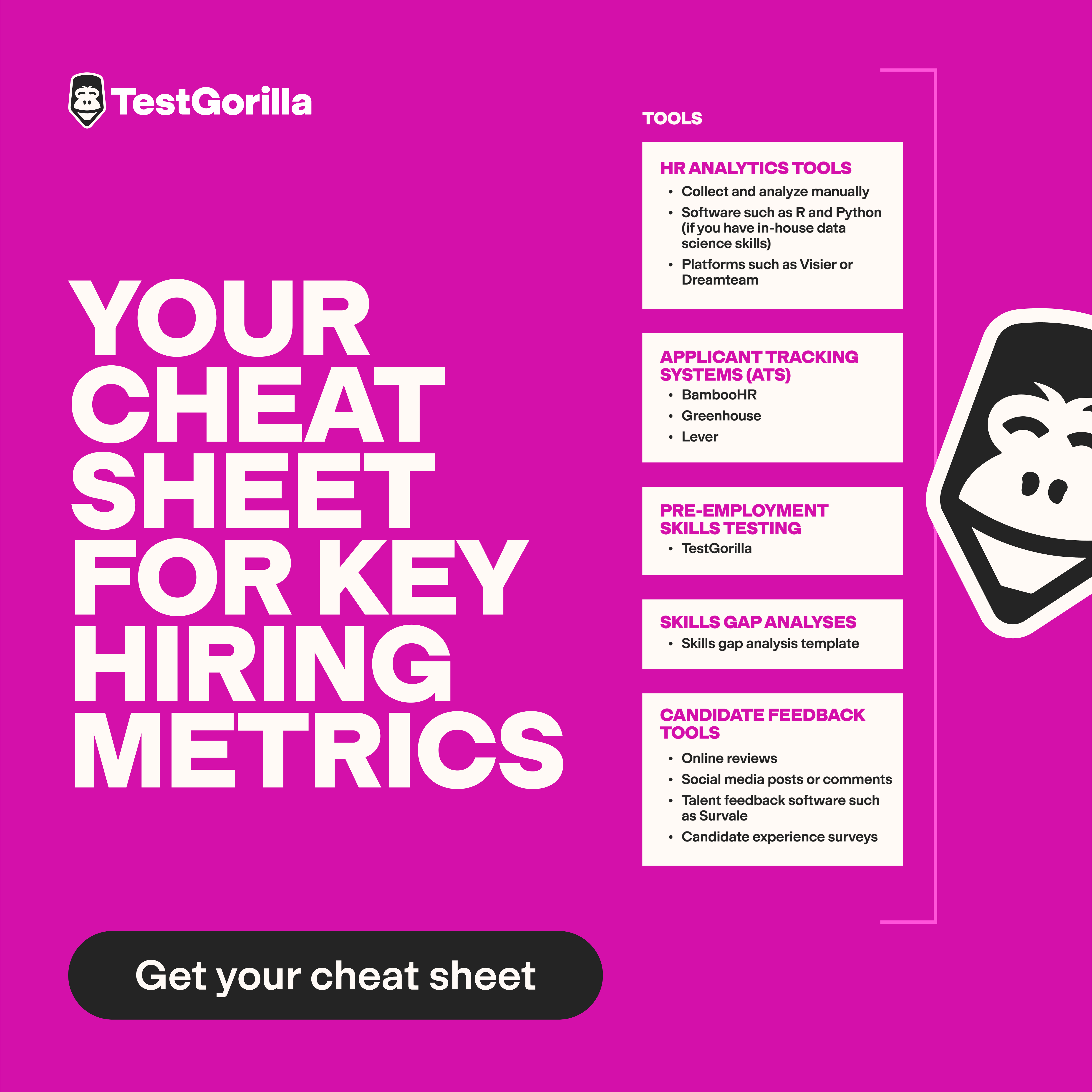12 tricky Perl developer interview questions to ask when hiring
Hiring a skilled Perl developer isn’t easy. On paper, many candidates look the part – but when debugging real-world scripts, wrangling complex data structures, or writing clean, maintainable code, only a few truly deliver – and an unskilled developer can sink your system.
That’s why your interview questions must dig deeper than trivia or textbook knowledge and assess practical skills to identify candidates who can contribute meaningfully from day one.
In this article, we explore some tricky Perl developer interview questions – plus what strong answers look like. We also share how you can incorporate Perl coding tests into your hiring process.
Why hiring Perl developers can be especially challenging
Unlike more modern programming languages, Perl attracts a mix of enthusiasts, legacy system maintainers, and generalist coders.
Here’s why finding and assessing top-notch Perl devs is so tough:
1. Limited experience with Perl
Some candidates list Perl on their resumes with little hands-on experience. Many candidates haven’t worked on production-grade Perl systems and may lack the know-how for integrating with legacy infrastructure or performing other tasks under constraints.
2. Lack of standardization
While flexibility can be a plus, it also comes with drawbacks. Perl’s motto – “there’s more than one way to do it” – means coders can solve the same task differently, so judging code quality at a glance is difficult.
3. Old syntax
Perl's syntax can be cryptic, and older codebases often lack comprehensive documentation – so new developers may struggle to understand and maintain existing code. Plus, Perl's extensive documentation can be overwhelming, making it difficult for developers to find specific information quickly.
What to evaluate in Perl developers
When hiring top Perl developers, be on the lookout for:
Core language knowledge: Understanding of context sensitivity, regular expressions, references, and commonly used built-in functions
Maintainable code-writing ability: Prioritizing clarity over cleverness by writing code that's easy to read and understand while using descriptive variable and function names, consistent formatting, and best practices
Use of industry tools: Understanding of tools like Perl::Critic and PerlTidy for enforcing coding standards and improving the code they write or maintain
Perl module experience: Familiarity with CPAN modules, differences between Perl 5 and Raku (Perl 6), and system integration
Debugging and testing proficiency, including knowledge of strict, warnings, Test::More, and other debugging and testing tools
System-level knowledge, like experience with shell scripting and system-level operations
The best insights on HR and recruitment, delivered to your inbox.
Biweekly updates. No spam. Unsubscribe any time.
12 tricky Perl developer interview questions
1. Differentiate my, our, and local.
Why it’s important: This question tests candidates’ understanding of variable scoping – lexical (my), package (our), and dynamic (local) scopes.
Strong answer: my creates a lexically scoped variable, our declares a package-scoped variable shared across the namespace, and local temporarily backs up and changes the value of a global variable within a dynamic scope.
2. How do scalar, array, and hash contexts influence behavior in Perl code?
Why it’s important: This question comes from Matt Bowman, CEO/Founder at Thrive Local.
Understanding how scalar, array, and hash contexts influence behavior in Perl is vital because, as Matt says, “the same function returns fundamentally different results based on context.” This is “a unique Perl characteristic that separates professionals from dabblers,” so “this question exposes their understanding of Perl's subtleties that can make or break production applications.”
Strong answer: In Perl, context – specifically, scalar and list context – plays a pivotal role in determining how expressions are evaluated. Understanding these contexts is essential, as the same code can yield different results based on the context in which it's used.
When an expression is evaluated in scalar context, Perl expects a single value. For example:
my @array = (1, 2, 3);
my $count = @array; # $count is 3
Assigning @array to a scalar $count forces scalar context, resulting in the number of elements in the array.
In list context, Perl expects a list of values. For instance:
my @array = (1, 2, 3);
my ($first, $second) = @array; # $first is 1, $second is 2
Assigning @array to a list of scalars enforces list context, distributing the array's elements accordingly.
Hashes also exhibit context-sensitive behavior. In scalar context, evaluating a hash returns a string indicating its internal state, like "3/8", which represents the number of used and allocated buckets.
my %hash = (a => 1, b => 2, c => 3);
my $info = %hash; # $info might be "3/8"
In list context, assigning a hash to an array flattens it into a list of key-value pairs:
my @flattened = %hash; # @flattened is ('a', 1, 'b', 2, 'c', 3)
This behavior is crucial when passing hashes to functions or when converting between data structures.
3. Describe your approach to modularization in Perl.
Why it’s important: This is another question from Matt Bowman. Modularization is critical for system maintenance, and, as Matt says, “[candidates’] answers will reveal whether they can build maintainable systems or just script together quick solutions that become maintenance nightmares.”
Strong answer: In Perl, I approach modularization by balancing simplicity and scalability. For straightforward utilities, I use Exporter-based modules, carefully managing exports to avoid polluting the namespace. However, for complex applications, I prefer object-oriented modules using Moose or Moo.
Moose provides a robust framework with features like attributes, type constraints, and roles, which promote encapsulation and code reuse. For instance, roles allow me to compose behaviors cleanly without deep inheritance hierarchies. Moo offers a lightweight alternative with a similar interface, suitable for scenarios where startup time is critical.
To maintain clean namespaces, I use modules like namespace::clean or namespace::autoclean, ensuring that imported functions don't leak into the consuming package. Encapsulation is achieved by defining attributes with appropriate access levels and using method modifiers to control behavior.
My modularization strategy focuses on creating reusable, maintainable components that align with Perl's strengths while mitigating its potential pitfalls.
4. Describe a Perl script you’ve written that interacts with an external API or system.
Why it’s important: This question assesses whether the candidate has real-world experience building Perl scripts that go beyond standalone code and interact with external services or systems.
Strong answer: I wrote a Perl script that pulled weather data from the OpenWeatherMap API every 30 minutes to feed into our internal analytics dashboard. I used LWP::UserAgent to make HTTP GET requests and parsed the JSON response using the JSON module.
The script included error handling to log timeouts or malformed responses, and it cached results locally to avoid unnecessary API calls. This integration helped automate a previously manual reporting task and improved the reliability of our data updates.
*Note: Candidates’ answers may also discuss their use of HTTP::Tiny or REST::Client for fetching or sending data.
5. What’s your experience with CPAN modules? Which ones have you used and why?
Why it’s important: A candidate’s answer reveals how well they understand the broader Perl ecosystem and whether they can use existing Perl modules skillfully – without reinventing the wheel.
Strong answer: I've had extensive experience using CPAN modules to streamline tasks and enhance code reliability, including:
Regexp::Common to access a library of commonly used regular expressions, ensuring consistent and accurate data validation across applications
DateTime, which has been invaluable for complex date calculations and formatting, especially when dealing with time zones and recurring events
Getopt::Long to handle command-line interface options and arguments effectively and build robust CLI applications
Test::More and Test::Exception for code quality and for writing comprehensive test suites that cover various code paths and exception handling scenarios
Using these modules allows me to focus on core application logic, reduce development time, and ensure my code adheres to best practices.
6. Explain the difference between scalar and list context in function returns.
Why it’s important: Context changes how functions behave and what they return.
Strong answer: In Perl, the context in which a function is called – scalar or list – determines its return value. For instance, consider the localtime function. When called in scalar context, like assigning its result to a scalar variable, it returns a human-readable string:
my $time_str = localtime(); # e.g., 'Fri May 9 07:34:52 2025'
However, when called in list context, such as assigning its result to an array, it returns a list of time components:
my @time_parts = localtime(); # (seconds, minutes, hours, etc.)
Another example is the grep function. In list context, it returns all matching elements, whereas in scalar context, it returns the count of matches.
You must understand these contexts because misinterpreting them could lead to unexpected behaviors in Perl programs.
7. How do you manage complex data structures like arrays of hashes in Perl?
Why it's important: You can use this question to assess whether the candidate is comfortable working with Perl’s more advanced data handling constructs in real-world scenarios.
Strong answer: I manage them very often. They’re particularly useful for representing collections of records. For example, I might have an array where each element is a hash reference containing user information:
my @users = (
{ id => 1, name => 'Alice', roles => ['admin', 'editor'] },
{ id => 2, name => 'Bob', roles => ['viewer'] },
);
To access a user's name, I'd use $users[0]{name}, and to iterate over all users, I'd use a foreach loop:
foreach my $user (@users) {
print "Name: $user->{name}\n";
}
When dealing with nested structures, such as the roles array within each user hash, I'd dereference accordingly:
foreach my $role (@{$user->{roles}}) {
print "Role: $role\n";
}
For debugging or inspecting these structures, I find the Data::Dumper module invaluable, as it enables me to visualize the entire data structure:
use Data::Dumper;
print Dumper(\@users);
Perl's data structures enable me to efficiently manage and manipulate complex datasets.
8. What’s your approach to modernizing a legacy Perl codebase with no tests?
Why it's important: Modernizing untested legacy Perl code requires a strategic mindset on top of solid coding skills. Asking this question tests candidates’ ability to balance caution with progress, ensuring that enhancements don't introduce new issues.
“Good Perl developers are archaeologists and refactorers,” says Listening.com founder Derek Pankaew. This question can reveal whether candidates can thoughtfully navigate and improve complex, aged codebases.
Strong answer: First, I isolate dependencies using tools like Docker or Plenv to create a controlled environment. This ensures that changes don't affect other systems and that I can replicate issues consistently.
Next, I write characterization tests to capture the current behavior of the code. These tests act as a safety net, enabling me to detect unintended changes during refactoring. I use Devel::Cover to assess test coverage and identify untested parts of the codebase.
With this foundation, I begin refactoring in small, manageable increments. I start by modularizing the code, extracting reusable components into separate modules. Then, I gradually introduce object-oriented principles using Moose or Moo, which provide modern features like roles and type constraints.
Throughout this process, I employ tools like Perl::Critic to enforce coding standards and Perl::Tidy to maintain consistent formatting. This structured approach ensures that the code becomes more maintainable and aligns with modern Perl best practices.
9. What are lexical variables, and how do they differ from global variables?
Why it's important: Scope is crucial for managing side effects and readability.
Strong answer: Lexical variables are variables whose scope is determined by the physical structure of the code – specifically, the location where they are declared. This is known as lexical or static scoping. In languages that support lexical scoping, a variable is accessible only within the block or function in which it’s declared, and any nested blocks or functions. This scoping rule is determined at compile-time, based on the program's source code structure.
Global variables, on the other hand, are declared outside of any function or block – typically at the top of a program or in a separate file. They’re accessible from any part of the program, including within functions, loops, or other blocks of code. While this is convenient, it can lead to issues like name collisions and unintended side effects – especially in large codebases.
You must distinguish these variables clearly to write clean, maintainable code.
10. How do you create and use anonymous subroutines in Perl?
Why it's important: This question tests whether candidates can use advanced Perl features like anonymous subs – the key to writing flexible and modular code.
Strong answer: I define anonymous subroutines using sub without a name, assign them to a scalar variable, and invoke them using the reference, enabling dynamic behavior.
11. How do you handle file I/O in Perl?
Why it's important: File operations are fundamental in many applications, and understanding them ensures robust, error-free code and code reusability.
Strong answer: Use the open function with appropriate error handling to read from or write to files. I always check the success of open and close filehandles after operations. For example:
open my $fh, '<', 'filename.txt' or die "Cannot open file: $!";
while (my $line = <$fh>) {
chomp $line;
# process $line
}
close $fh;
I employ best practices, including using lexical filehandles, handling exceptions, and avoiding reading large files entirely into memory unless necessary.
12. What are some common modules you use for testing in Perl, and why?
Why it's important: Testing ensures code reliability and maintainability, and familiarity with testing modules indicates a commitment to quality in every block of code.
Strong answer: Common modules include Test::More for basic testing needs, Test::Exception for testing exception-based code, and Test::MockModule for mocking in tests. These modules provide a comprehensive framework for writing and organizing tests, making it easier to catch bugs and ensure code behaves as expected.
Red flags to watch out for
When evaluating Perl candidates, look out for:
Shallow answers: Say you’re asking a candidate how they’d modernize a legacy Perl codebase with no tests. “Anyone who says ‘rewrite it’ without a transition plan?” says Derek Pankaew. “Red flag.”
“Write-only” code: Overuse of clever syntax or obfuscation that hampers readability
Neglect of best practices: Dismissal of use strict;, warnings, or lack of testing protocols
Inability to explain code behavior: Using constructs like context, implicit, or scalar variables without clear understanding of what these do
Limited real-world experience: Experience confined to basic scripting without exposure to complex, production-level Perl applications
These suggest a candidate may struggle with, for instance, legacy system scalability and maintainability.
Don’t just ask – test
Interviews alone might not reveal risky coding habits or gaps in practical knowledge. To ensure comprehensive candidate assessment, use one or more of our coding skills tests selecting Perl as the programming language. These include our:
Coding: Data Structures – Strings test
Coding: Debugging test
Coding: Data Structures – Arrays test
Data Wrangling test
The best method is to screen your candidates with our assessments and shortlist the top-scoring ones for your interview. This way, you'll have a good understanding of their strengths and weaknesses for the interview – plus, you won't waste time interviewing candidates who don't fit the bill.
Don’t guess – assess: Find Perl pros who deliver
The right interview questions can help you uncover devs with the deep Perl knowledge you need.
But hiring skilled Perl developers goes beyond resumes and interviews. With TestGorilla's coding tests, you can objectively evaluate candidates' real-world skills, ensuring they can write maintainable, efficient, and well-documented code. With our platform, you can also assess their cognitive abilities and other role-specific skills.
Ready to elevate your hiring strategy? Book a demo today.
You've scrolled this far
Why not try TestGorilla for free, and see what happens when you put skills first.




















